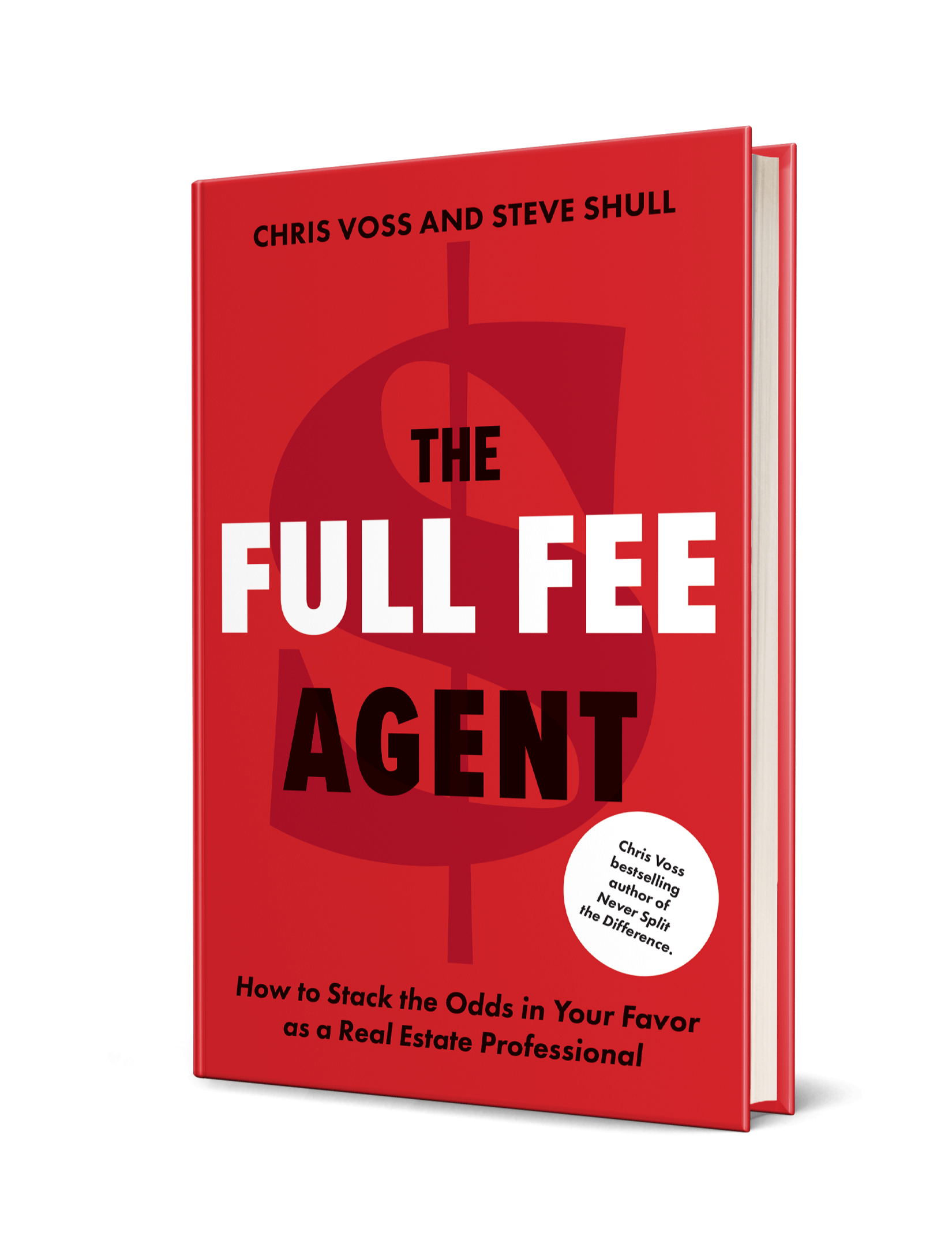Why Agents Should Focus on Nightmares More Than Dreams
Nov 08, 2024
by Laurie Gilmore
As we continue our exploration into keeping the responsibility where it belongs, let’s take a look at how one question may be the key to guiding your clients toward productive decision-making…
What’s your worst nightmare?
Your client’s worst nightmare, that is.
Of course, getting to the bottom of their hopes and dreams—their ideal outcome—is a crucial part of making them feel understood. But the flip side of that coin is just as important, if not more so.
Why? Because fear of loss is the single most powerful driver of human decision making and behavior.
Understanding their nightmare outcome is the fastest way to find out where their bottom line is—the line where they will walk away from a deal (or, if that’s not an option, they will be extremely disappointed with the deal).
As agents, we have a tendency to focus on the dream scenario and tread lightly around the nightmare, even when we are fully aware of both.
What we should be doing is staying laser focused on that nightmare, referencing that worst case scenario as often as possible.
That anchors the person psychologically to their worst-case scenario, which works in your favor. It means that ANY distance you help them gain away from that outcome is a positive for them.
Compare that to anchoring on the dream outcome. Anything less than that—any gap between their anchor and the outcome—will be a negative for them.
Think about it…
Imagine your client tells you their dream scenario is to sell their house in one weekend, and their nightmare is that they’re stuck on the market for 6 months.
If you dwell on the dream scenario, and the property sells in 3 weeks, they’re going to be disappointed. The sale took 85% longer than they’d hoped.
A 3-week sale feels like a failure.
Whereas if you anchor them to 6 months, and the property sells in 3 weeks, they’ll be thrilled. They’ve gotten this over with 87% faster than they feared.
The same 3-week sale feels like a win.
This is how the human brain works, so utilize human nature to your advantage.
Using dream and nightmare anchors is an exceptionally effective and efficient way to do three things…
1) Uncover whether or not your client has realistic expectations
Discuss their dream and nightmare scenarios during the New Client Discovery Call to find out whether their expectations might be deal breakers for you.
For example, if their price expectations are way too high, and their nightmare sale price is right around market value, that may not be a road you want to travel with them. By finding that out in your very first conversation, you save yourself a ton of time, money, and stress.
2) Help your client establish realistic expectations they can feel good about
Starting with the extremes creates clear reference points. From there, you can explore the space between and find the line between the nightmare and the dream where an outcome feels both realistic and comfortable.
3) Motivate your client toward productive decision-making
What are they willing to do to avoid their nightmare scenarios? For example, how much home prep are they willing to do to avoid their nightmare price? Or how competitively are they willing to price their home to avoid their nightmare timeline?
Let’s see what it looks like to focus on the nightmare scenario in a pricing conversation.
You’ll probably talk about price for the first time during your New Client Discovery Call with a seller. They might reveal a dream number in response to a prompt like this during the ‘Is there a deal here?’ section:
“If all of your dreams came true in terms of this sale, what would that look like?”
The point of getting a number from them is not to debate it, negotiate it, or pin it down as a list price.
The point is to use whatever number they’ve uttered as a key to understanding their motivations—their feelings—and to making them feel understood.
So if the owner says, “My dream come true would be to sell this for the same price as my neighbor around the corner—$3.5MM.”
You can use a Mirror to encourage them to share more: “3.5?”
Maybe they insert some realism with something like, “I mean, I know that’s not a possibility. His was completely renovated, and ours is not.”
What you DON’T do at this point is pull up price per square foot figures and let them know how their unrenovated home compares to that $3.5MM sale. You stay on the feelings.
You use that dream anchor to pivot to the nightmare with something like…
“So it sounds like $3.5MM is your fantasy outcome.
What would be your nightmare?
You probably have a worst-case scenario that keeps you up at night.”
Even people who don’t have a clear fantasy definitely have a clear dread.
Often a seller will respond in the form of a question, “You don’t think it would go as low as $2MM, do you?”
Again, what you DON’T do here is jump in with your calculations as to where you think their home is going to sell. (Even though you may have a complete spreadsheet in your head). Stay laser focused on what they’re thinking and feeling.
You might respond with, “So it sounds like at $2MM, you’d rather not sell at all. That would be a nightmare.”
How they respond to that gives vital information not only about their bottom line, but in regards to whether or not they’re a real “now” seller.
Maybe they respond with, “Absolutely not. I would rent it out.”
Great. Don’t let a statement like that slip by unacknowledged. Follow that with something like:
“Sounds like being a landlord for a while wouldn’t be a problem for you.”
And you’d follow that train of thought until you find out if they’re playing chicken with the rent card, or if that would be their realistic decision.
Then you evaluate: Is their nightmare number too close to market reality, making this a maybe sale/maybe rental?
And you make your business decision based on that. Do you want this deal?
But maybe their answer is, “Well I’d still have to sell at $2MM, but that would be horrific. I don’t know how I could make my next move if that were the sale price.”
They may ask again, “Do you think it could sell that low?”
What you DON’T do is reassure them that this would never happen.
Label their thoughts and feelings: “It sounds like a sale price that low would be devastating”
And you may introduce this concept: “You probably want to do everything in your power to avoid selling at that nightmare price.”
You may get something along the lines of “Absolutely.”
This may prompt them to share a clue as to where their realistic hopes lie, “I mean, I would hope it would be at least $2.5MM.”
Don’t let that slip by. Grab it. That’s a huge insight into where their realistic expectations are.
Acknowledge that with a Label or a Paraphrase: “It sounds like 2.5MM is where you start to feel more comfortable.”
So now you have a treasure chest of influential tools.
You have the anchors of the dream price and the nightmare price.
You have a sense of realistic expectations.
And you’ve also established the dynamic that this person will have decisions to make along the way that can impact how close to or far away from their nightmare they may end up.
This will become your anchor concept in terms of guiding your client as they make decisions on pricing strategy and preparation.
So when it’s time to get the property ready for sale. You might open up the conversation with something like:
“In terms of pricing and preparation: You shared that $2MM would be your nightmare sale price.
It sounds like you’re committed to doing whatever you can in order to sell as far away from that number as possible. At least up to $2.5MM.
Would it be a bad idea for me to detail for you all of the repair, painting, and staging options available to you that may raise the perceived value for buyers, and then you can decide which of those things you’re willing to do?”
Notice you did not give them a price opinion.
You did not whip out your crystal ball and give them predictions.
You did not tell them what they should do.
They gave you numbers.
You did not contradict, negotiate, or confirm them.
You did not agree, disagree or sympathize.
You mirrored and labeled what those numbers signify to them.
You established that they have decision-making power.
That’s Tactical Empathy!
Tactical EmpathyTM and related concepts are the intellectual property of The Black Swan Group, used here with permission.
Get free coaching in your inbox every week
Stay focused on what truly matters with key highlights and insights from all our coaching programs.


